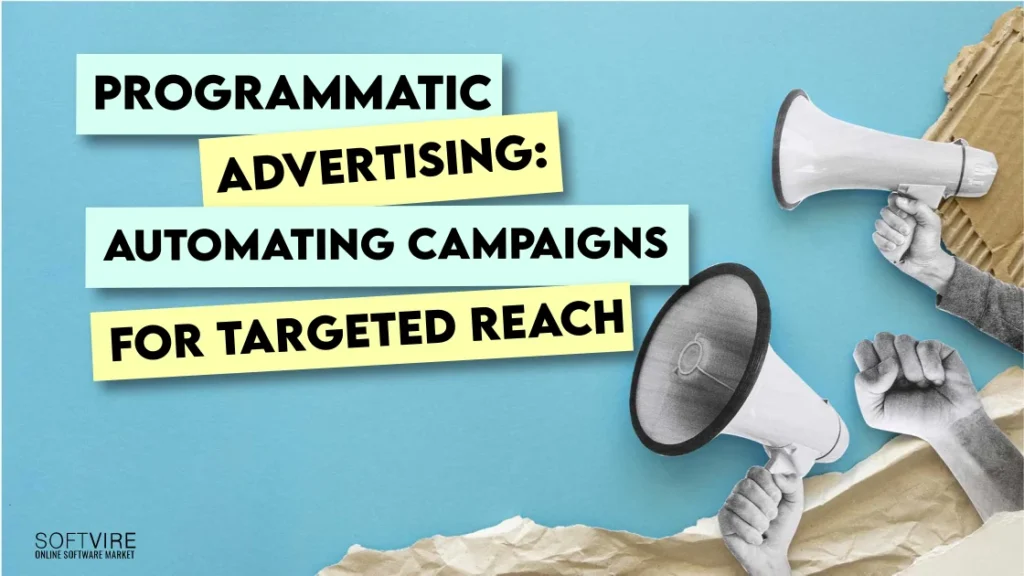I. Introduction to Programmatic Advertising
A. Definition and overview of programmatic advertising
Programmatic advertising is the automated buying and selling of digital ad inventory through real-time bidding (RTB) and algorithms. It enables advertisers to target specific audiences and optimize their campaigns for maximum effectiveness.
B. The importance of programmatic advertising in the digital marketing landscape
Programmatic advertising has revolutionized how digital ads are bought and sold. It offers precision targeting, cost efficiency, and real-time optimization, making it a crucial strategy for advertisers to reach their target audiences effectively.
C. Advantages of programmatic advertising over traditional advertising methods
Programmatic advertising provides enhanced targeting capabilities, increased efficiency, improved transparency, and control. It outperforms traditional advertising methods by leveraging data-driven insights and automation.
II. Understanding the Programmatic Advertising Process
A. Real-time bidding (RTB) and its role in programmatic advertising
RTB is the automated auction-based process where advertisers bid for real-time ad impressions. It allows for purchasing individual impressions, ensuring efficient ad spend allocation.
B. Key players in the programmatic ecosystem
1. Demand-side platforms (DSPs)
DSPs are platforms that enable advertisers to manage and optimize programmatic ad campaigns. They provide access to multiple ad exchanges and data sources, allowing advertisers to target specific audiences effectively.
2. Supply-side platforms (SSPs)
SSPs are platforms used by publishers to manage and sell their ad inventory. They facilitate the connection between publishers and advertisers, ensuring efficient monetization of digital assets.
3. Data management platforms (DMPs)
DMPs collect, analyze, and segment data to provide valuable insights for programmatic advertising campaigns. They enable advertisers to leverage audience data for precise targeting and campaign optimization.
C. Ad exchanges and their role in facilitating programmatic transactions
Ad exchanges act as marketplaces where impressions are bought and sold through real-time bidding. They connect advertisers and publishers, ensuring efficient and transparent transactions.
D. Tracking and analytics in programmatic advertising
Programmatic advertising relies on robust tracking and analytics tools to measure campaign performance and gather actionable insights. Advertisers can optimize their campaigns based on real-time data, ensuring better targeting and ROI.
III. Benefits of Programmatic Advertising
A. Enhanced targeting capabilities
1. Audience segmentation and targeting based on demographic, behavioral, and contextual factors
Advertisers can target specific audiences via programmatic advertising based on various parameters such as age, gender, location, interests, and browsing behavior. This precision targeting increases the relevance and effectiveness of ads.
2. Personalization and dynamic ad creative optimization
Programmatic advertising enables dynamic ad creative optimization, where ads are customized in real-time based on user data and behavior. This personalization increases engagement and conversion rates.
B. Increased efficiency and cost-effectiveness
1. Automated campaign management and optimization
Programmatic advertising automates campaign management, reducing manual effort and increasing efficiency. It optimizes real-time ad delivery and budget allocation, ensuring maximum performance and cost-effectiveness.
2. Real-time performance monitoring and adjustments
Programmatic advertising provides real-time performance monitoring and analytics, allowing advertisers to track key metrics and make necessary adjustments on the fly. This agility and data-driven decision-making lead to better campaign outcomes.
C. Improved transparency and control
1. Access to real-time data and campaign insights
Programmatic advertising offers advertisers real-time data and insights, empowering them to make data-driven decisions. Advertisers can monitor campaign performance, view ad placements, and adjust strategies.
2. Brand safety and ad fraud prevention measures
Programmatic advertising platforms employ advanced technologies and partnerships to ensure brand safety and prevent ad fraud. Advertisers control ad placements, ensuring their ads appear in suitable and reputable environments.
IV. Implementing Programmatic Advertising Campaigns
A. Defining campaign objectives and target audience
Advertisers must establish clear objectives and identify their target audience segments. Defining specific goals and audience profiles will guide the campaign setup and optimization process.
B. Setting up programmatic campaigns
1. Campaign budgeting and bidding strategies
Advertisers should determine their campaign budget and select appropriate bidding strategies, such as cost-per-mille (CPM) or cost-per-click (CPC), based on their goals and target audience.
2. Selecting ad formats and creative assets
Advertisers must choose suitable ad formats (display, video, native, etc.) and create compelling creative assets that align with their campaign objectives and resonate with their target audience.
C. Utilizing data and analytics for campaign optimization
1. A/B testing and performance analysis
Advertisers can conduct A/B testing to compare different ad variations, messaging, or targeting strategies. They can analyze the results and optimize their campaigns based on performance insights.
bashCopy code
2. Retargeting and audience expansion techniques
Retargeting allows advertisers to reach users who have previously shown interest in their products or services. Additionally, audience expansion techniques can help advertisers identify and target similar audiences to expand their reach.
D. Monitoring campaign performance and making adjustments
Advertisers should continuously monitor their campaign performance through programmatic advertising and analytics tools. By tracking key metrics, they can identify areas of improvement and make necessary adjustments to optimize their campaigns.
V. Challenges and Considerations in Programmatic Advertising
A. Ad viewability and ad fraud concerns
Programmatic advertising faces challenges related to ad viewability, where ads may not be fully seen by users, and ad fraud, where invalid or fraudulent activity occurs. Advertisers should adopt viewability measurement tools and implement anti-fraud measures to mitigate these risks.
B. Privacy and data protection regulations
Advertisers must comply with privacy regulations like the General Data Protection Regulation (GDPR) and the California Consumer Privacy Act (CCPA). They should ensure that user data is collected and used transparently and compliant.
C. Ad blocking and ad fatigue
The rise of ad-blocking software and ad fatigue among users pose challenges to programmatic advertising. Advertisers must create engaging and relevant ad experiences to combat ad blocking and minimize ad fatigue.
D. Ad placement and brand safety considerations
Advertisers must consider ad placement to ensure their ads appear in suitable and brand-safe environments. They can leverage brand safety tools and partnerships to prevent ad placements that could harm their brand reputation.
VI. Future Trends and Innovations in Programmatic Advertising
A. Advances in machine learning and artificial intelligence
Machine learning and artificial intelligence (AI) will enhance programmatic advertising by enabling more sophisticated targeting, ad optimization, and predictive analytics capabilities.
B. Programmatic audio and connected TV advertising
Programmatic advertising expands beyond traditional display and video formats. It is increasingly used for audio and connected TV advertising, providing new opportunities for reaching audiences on these platforms.
C. Cross-device targeting and attribution
Programmatic advertising will evolve as users switch devices to provide cross-device targeting and attribution capabilities. Advertisers will be able to deliver consistent and personalized experiences across multiple devices.
D. Contextual targeting and cookieless advertising
With privacy concerns and the phasing out third-party cookies, programmatic advertising will rely more on contextual targeting, where ads are matched to relevant content rather than individual user data. This shift will ensure privacy compliance while still delivering targeted advertising.
Conclusion:
In conclusion, programmatic advertising has revolutionized digital marketing by automating campaign management, providing enhanced targeting capabilities, and increasing efficiency. It offers advantages over traditional advertising methods, such as improved transparency and control.
Programmatic advertising is essential for reaching target audiences effectively and optimizing campaigns for better results. Its significance in digital marketing is multiplying. Programmatic advertising will change with technological advancements such as machine learning and AI.
Advertisers must keep up with current trends and innovations to leverage programmatic advertising effectively and stay competitive in the ever-changing digital marketing landscape.
Are you looking for online learning tools and discounted Microsoft products? Check out our hot offers at Microsoft Softvire Australia. Upgrade to the latest version of Windows and unlock new features and enhanced security.



